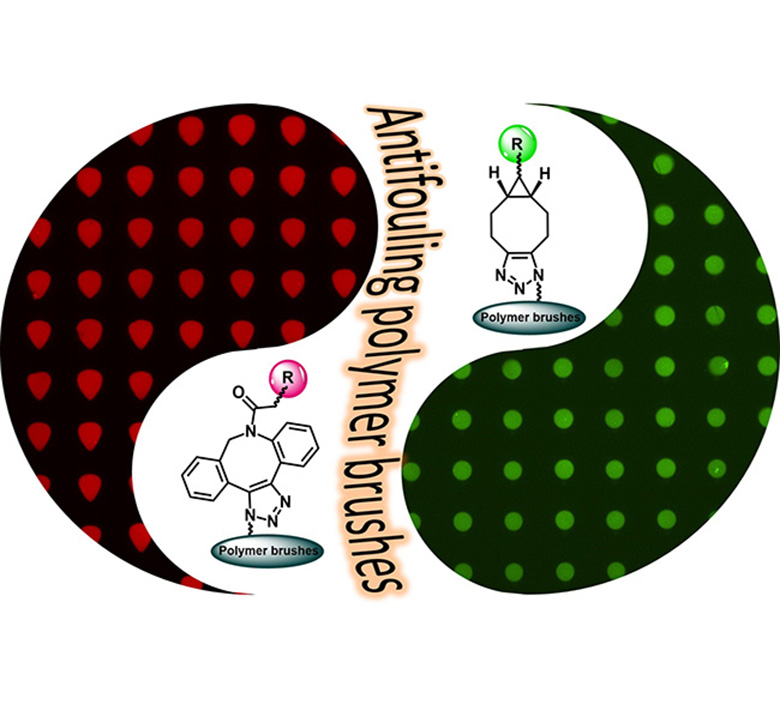
Evaluation of Dibenzocyclooctyne and Bicyclononyne Click Reaction on Azido-Functionalized Antifouling Polymer Brushes via Microspotting
-
Author:
B. Yang, Y. Wang, M. Vorobii, E. Sauter, M. Koenig, R. Kumar, C. Rodriguez-Emmenegger, M. Hirtz
-
Source:
Adv. Mater. Interfaces 9 (2022) 2102325
- Date: 2022
-
Strain-promoted alkyne-azide cycloaddition (SPAAC) has become an indispensable tool in bioorthogonal conjugation and surface immobilization. While numerous studies have focused on enhancing the reactivity of cyclooctynes, a facile method to evaluate the binding efficiency for cyclooctyne-azide-based immobilization without any sophisticated facilities is still missing. In the present work, different derivatives of dibenzocyclooctyne/bicyclononyne (DBCO/BCN) linked to either a fluorophore or a biotin-moiety are patterned on ultra-low fouling polymer brushes, which can avoid unspecific protein contamination without any prior blocking steps. The polymer brushes are composed of an antifouling bottom block and azide-terminated top block. The assessment of binding efficiency is conducted on ordered arrays spotted by microchannel cantilever spotting (μCS) with a normal fluorescent microscope. Both cyclooctynes demonstrate reliable binding performance with azide-bearing diblock polymer brushes via μCS, but DBCO shows a higher surface density of molecular immobilization according to the protein binding assays. This work provides a reference for choosing appropriate cyclooctyne to couple with azides and can be useful for the design of biosensors or bio-platforms for analyte detection, cell capture, and other biological applications.
